Garment Tags: Compliance, Care and Consumer Trust
In the fast-paced world of fashion and apparel, garment tags may seem like a minor detail — but they carry major significance. Accurate and compliant clothing labels are not just a legal requirement in markets like the United States; they also serve as a vital touchpoint between your brand and your customers. From fiber content to care instructions, these small tags provide essential information that builds consumer trust, ensures transparency, and protects your business from costly regulatory pitfalls.
In this guide, we’ll explore the core requirements for garment labels in the U.S., highlight common mistakes made by small apparel businesses, and offer best practices to help your brand stay compliant while fostering confidence in every purchase.
Getting your garment tags right is more than just navigating regulations; these labels are fundamental to building a reputable apparel business. Think of them as essential communication tools. Correct apparel labeling ensures legal compliance with FTC labeling rules (regulations set by the Federal Trade Commission, the US agency protecting consumers).
This compliance is directly tied to the health of your business, helping you avoid potentially costly penalties for violations. Beyond the legal necessities, accurate labels build consumer trust. When customers clearly understand what they are buying (material composition) and how to care for it (garment care), their confidence in your brand grows.
Proper care instructions also help maintain the garment’s quality, leading to greater customer satisfaction and longevity for the product itself. These elements work together, underpinning your brand’s credibility and operational integrity.
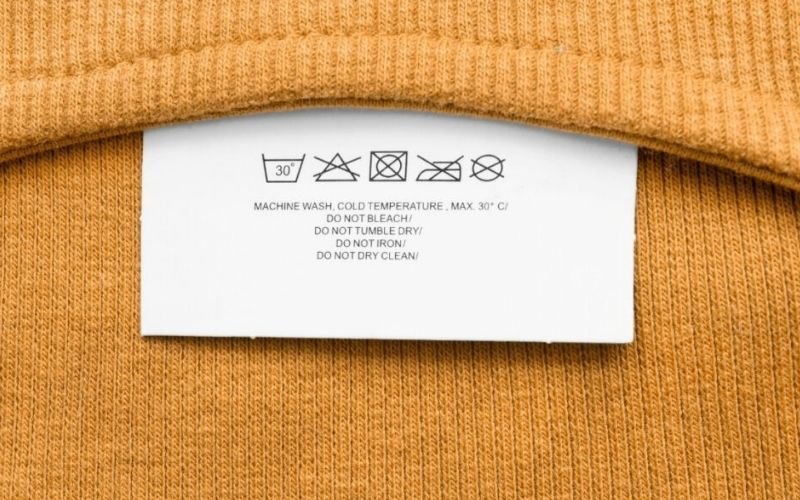
2. The core four: Mandatory information for US apparel labels
When creating apparel labels for garments sold in the United States, certain pieces of information are non-negotiable. The following four elements represent the absolute minimum mandatory information required by US law, specifically under FTC regulations (rules enforced by the Federal Trade Commission). Ensuring these details are accurately presented on your labels is essential for compliance.
2.1. Fiber content: Accurately declaring material composition
Providing accurate fiber content information is a cornerstone of textile product identification. Fundamentally, consumers have a right to know the material disclosure for the garments they purchase.
- What to list: You must use the correct generic fiber names as recognized by the FTC. Common examples include cotton, polyester, wool, rayon, nylon, and spandex. Avoid using trademarked names unless the generic name is also present.
- How to list:
- Trim and linings: Separate disclosure for non-structural trim (like collars, cuffs, lace) is usually needed only if the trim covers 15% or more of the garment’s surface area or if claims about the trim’s fiber content are made. Linings generally require separate fiber content disclosure unless they are specifically exempted.

2.2. Country of origin: Stating where the garment was made or assembled
The country of origin designation informs consumers about the manufacturing location of the garment. This requirement falls under the purview of both the FTC (Federal Trade Commission) and CBP (U.S. Customs and Border Protection).
The origin is defined as the country where the garment underwent its final “substantial transformation” – typically, where the main assembly occurred. For products involving processes in multiple countries, determining the correct origin can be complex, but clarity is key. The label must unambiguously state the final country of assembly.
There’s a distinction in US import label rules based on where the product is made:
- Imported goods: Must clearly state the country of origin, for example, “Made in Vietnam,” “Made in India,” or “Product of Bangladesh.”
- “Made in USA”: Claims of “Made in USA” are held to a very high standard by the FTC. The rule requires that “all or virtually all” of the product be made in the United States, encompassing both materials and manufacturing processes. Qualified claims like “Made in USA of Imported Fabric” are necessary if foreign materials are used. Correct labeling is crucial to avoid misleading consumers.

2.3. Manufacturer / dealer identification: Linking the product to your business
Labels must include manufacturer identification to show which US-based business is responsible for the garment. This allows traceability within the market. You have two primary options for fulfilling this requirement:
- Full business name: Display the registered name under which your company operates.
- RN number: Use your registered identification number (RN number). This is a unique number issued free of charge by the FTC specifically to US businesses involved in manufacturing, importing, distributing, or selling textile, wool, or fur products. You can apply for an RN number online via the FTC website.
Using an RN number offers several benefits, particularly for small businesses. It saves valuable space on the label compared to printing a full company name and address, and it keeps your physical address private on the garment itself while still ensuring compliance and traceability.
2.4. Care instructions: Guiding proper garment maintenance and longevity
Providing clear guidance on garment maintenance falls under the specific Care Labeling Rule. The core requirement is to list at least one safe cleaning method.
- Methods: This typically covers washing method, drying method, ironing and dry cleaning instructions appropriate for the garment.
- Warnings: You must also include warnings if a standard cleaning process would harm the product (e.g., “Do Not Bleach,” “Do Not Tumble Dry”).
- Symbols vs. text: Instructions can be conveyed using standard ASTM care symbols or clear, easily understood text. Symbols offer the advantage of saving space and being universally understood across language barriers. A combination is also common.
- Completeness: The care instructions must cover the entire garment, including all components like trim or linings, unless specifically exempted.
- Reasonable basis: Businesses must have proof or a “reasonable basis” supporting the care instructions provided. This often comes from testing results, prior experience with similar fabrics, or reliable supplier information.
- Durability: Critically, the care instructions must remain legible (readable) throughout the expected useful life of the garment.
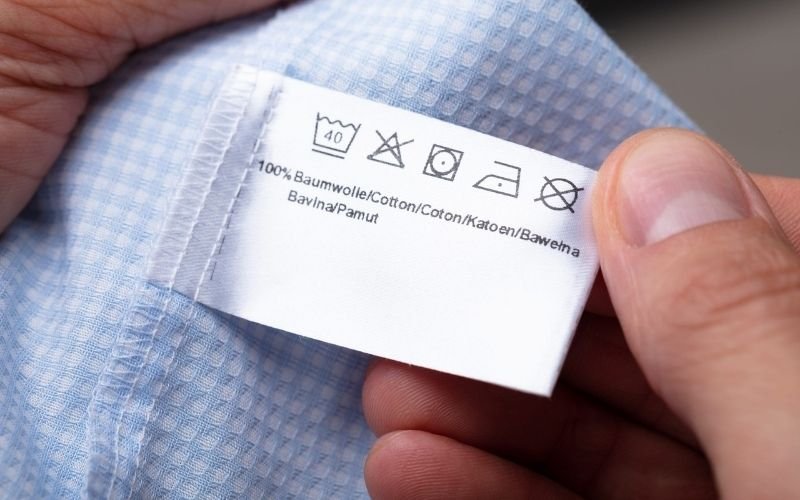
3. Placement, legibility & durability: Ensuring labels are effective
Beyond just the content, how and where you affix your labels matters significantly. FTC regulations require label placement rules that ensure labels are easily found and read by consumers before they buy the garment.
This means they must be in a conspicuous location – not hidden away where a consumer would have to damage the item to see it. Common placements include the center back neck, side seam, or waistband, depending on the garment type.
Equally important are legibility and durability. The information must be clear and easy to read, and the label itself must remain attached and readable for the garment’s reasonable lifespan through normal use and care cycles.
Choosing the right label type contributes to meeting these requirements. Consider the difference between woven labels vs printed labels:
- Woven labels: Often perceived as higher quality, woven labels offer excellent durability as the information is woven into the fabric. They hold up well to washing and wear.
- Printed labels: Can be very soft against the skin (tagless options) and cost-effective, especially for intricate details or large quantities. However, the print’s legibility might fade over time with repeated washing, so choosing high-quality printing methods and materials is crucial for durability.
The best choice depends on your garment type, brand aesthetic, budget, and, crucially, ensuring the label meets the placement, legibility, and durability standards.

4. Common mistakes small apparel businesses make with labeling
Navigating labeling requirements can be tricky, especially for small apparel businesses. Here are some frequent errors to avoid, ensuring legal compliance:
- Incorrect or incomplete fiber content: Misidentifying fibers, using incorrect percentages, or failing to list all fibers according to FTC rules can mislead consumers and violate regulations.
- Wrong country of origin: Stating the incorrect manufacturing location, especially making unsubstantiated “Made in USA” claims, is a serious violation. Ensure you understand where the final assembly or “substantial transformation” occurred.
- Inadequate care instructions: Providing instructions that could damage the garment, omitting necessary warnings (like “Do Not Bleach”), or failing to provide at least one safe cleaning method violates the Care Labeling Rule.
- Using misleading terms: Employing terms like “eco-friendly” or “sustainable” without proper substantiation can be deceptive. Stick to factual, required information.
- Poor label durability or placement: Using labels that fall off, fade quickly, or are hidden from view before purchase fails to meet FTC requirements for legibility, durability, and conspicuousness.
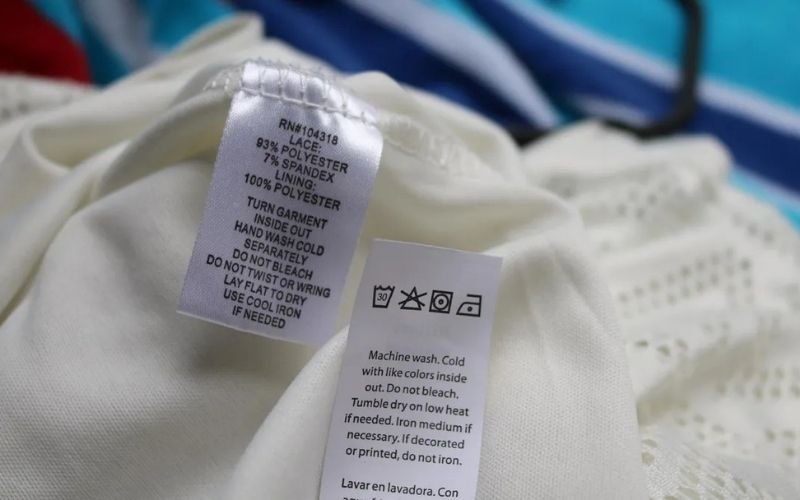
5. Staying compliant: Resources and best practices for your business
Maintaining labeling compliance is an ongoing effort. Fortunately, reliable resources and best practices can help your business stay on track.
- Consult official sources: The primary resource is the FTC itself. Their website offers detailed guides, including the publication “Threading Your Way Through the Labeling Requirements Under the Textile and Wool Acts,” which is invaluable. Familiarize yourself with their official documentation.
- Seek expert help when needed: For complex situations, such as multi-country manufacturing or uncertainty about specific fiber claims, consulting with labeling experts or legal counsel specializing in textile regulations can prevent costly mistakes.
- Implement internal processes: Establish checklists as part of your design and production workflow. Ensure label information is reviewed and verified before production orders are finalized. Quality assurance steps should specifically include checking the final labels on garments. Assumption: need for process improvement is often key for growing businesses.
- Keep good records: Maintain documentation supporting your label claims. This includes fiber test results, records verifying the country of origin, and the reasonable basis (test results, supplier data) for your care instructions.
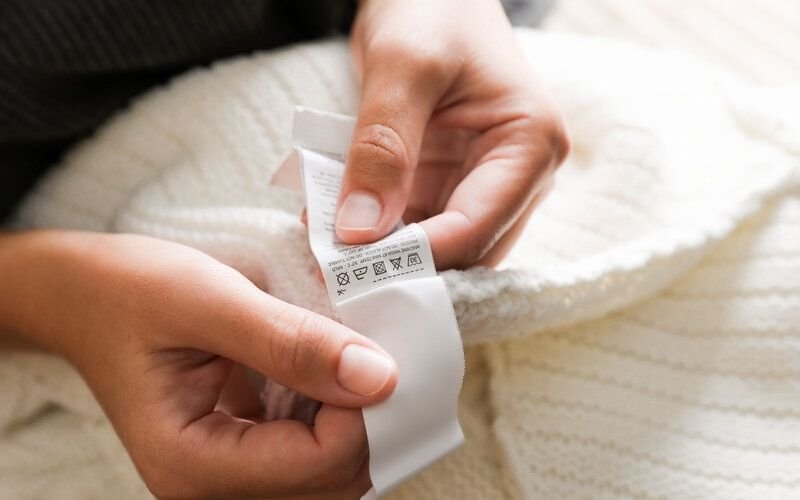
6. Related questions
6.1. Do I need separate labels for different items sold together (e.g., a suit)?
Generally, yes. If items sold as a set (like a jacket and pants) have different fiber contents or require different care, they need separate labels with the appropriate information. However, if a matched set is sold as a single unit and all items have the identical fiber content, origin, and manufacturer ID, one label might suffice for those elements, often placed on the main/upper garment.
Crucially, care instructions must cover all pieces accurately; if care differs (e.g., jacket is dry clean only, pants are washable), this must be clearly specified, potentially requiring separate care information even if other details match.
6.2. What are the specific rules for “Made in USA” labeling?
The standard for an unqualified “Made in USA” claim is very strict under FTC guidelines. It means that “all or virtually all” of the product must be made in the U.S. This covers the processing or manufacturing of the materials and the final assembly of the garment.
If foreign materials are used, a qualified claim is necessary, such as “Made in USA of imported fabric” or “Assembled in USA from foreign components.” Simply performing final assembly in the US does not automatically qualify a product for the “Made in USA” label if significant materials or processing occurred elsewhere. Always refer to the latest FTC guidelines for specifics.
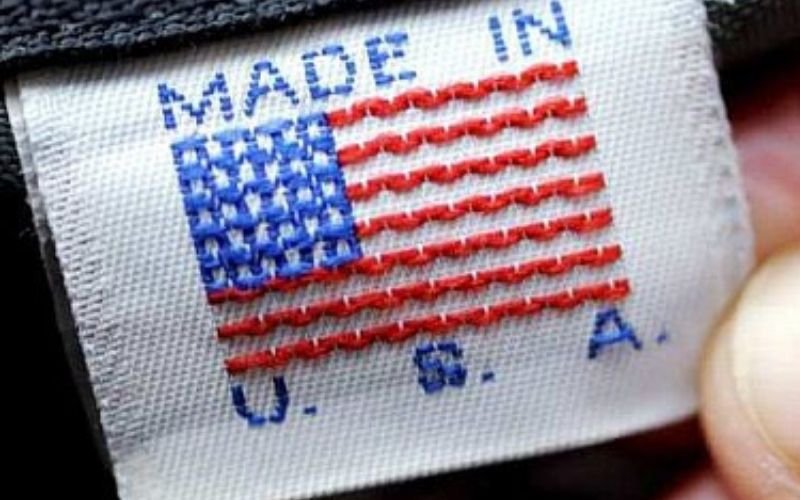
No, hang tags are not substitutes for the required manufacturer labels. Hang tags are primarily marketing tools used for branding, pricing, or additional product storytelling (antonym: hang tag storytelling vs. required facts).
The mandatory information (fiber content, origin, manufacturer ID, care instructions) must be on a permanent or semi-permanent label that meets FTC requirements for placement, legibility, and durability, ensuring it remains accessible and readable for the garment’s life. While you can repeat required information on a hang tag, it doesn’t fulfill the legal requirement on its own.
Read more:
Ensuring your manufacturer labels are accurate and complete is more than just a regulatory hurdle; it’s a fundamental aspect of building a trustworthy apparel brand and ensuring legal compliance. By correctly stating the fiber content, country of origin, manufacturer ID (or RN number), and providing reliable care instructions—all while adhering to placement and durability rules—you meet the necessary requirement and build confidence with the consumer.
While navigating the specifics can seem detailed, understanding these core elements makes compliance manageable, especially for a growing small business. Working with dependable suppliers who understand these requirements can also streamline the process, whether you opt for durable woven labels or clearly printed labels. Investing in correct labeling from the start protects your business and fosters positive customer relationships.






















